Have you ever wondered why some trees glow with health each spring while others seem to struggle year after year? The secret to those thriving giants might surprise you: it’s often the result of strategic mulching trees in autumn. Fall isn’t just about raking leaves—this season holds the key to year-round tree care and long-lasting garden beauty. In this comprehensive guide, you’ll unlock the real reasons why fall mulch is your best bet for healthy, happy trees, and learn the expert-approved steps that will set your landscape up for success.
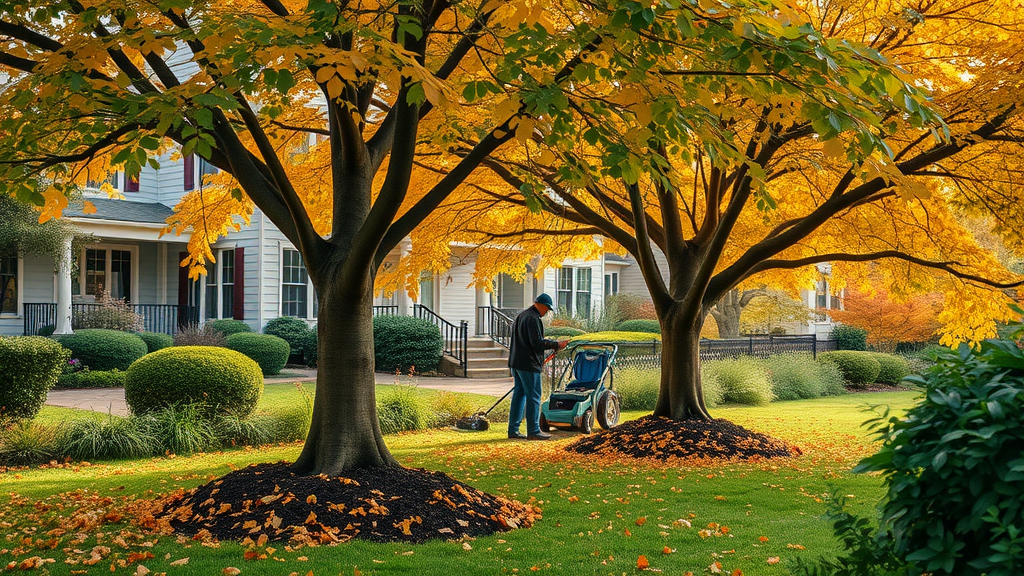
Unlocking the Power of Mulching Trees in Autumn: Why Seasonal Mulch Matters
As the colors of autumn settle in and leaves drift down, mulching trees in autumn becomes more than just a garden chore—it’s an essential act of tree care that experts swear by. Applying fall mulch at this crucial time helps trees and shrubs survive fluctuating temperatures, retain valuable soil moisture, and battle winter’s harshest challenges. Whether you’re nurturing mature oaks or protecting delicate saplings, the power of autumn mulching lies in its ability to simulate a tree’s natural forest environment. By blanketing the soil with organic mulch, you insulate plant roots, deter weed growth, and enhance the health of your landscape for seasons to come. Thoughtful fall mulching also cuts down on weeding, conserves water, and improves soil quality—meaning less maintenance and bigger growth payoffs by next spring.
Why Do Experts Recommend Mulching Trees in Autumn?
Arborists agree: the weeks before winter offer a golden window for mulching. Tree roots remain active in cool, moist fall soil, absorbing last-minute nutrients and expanding before the ground freezes. Well-timed fall mulch protects these roots from temperature swings and drying winds, acting as a natural shield against winter’s unpredictability. Unlike quick mulch jobs in spring, autumn applications linger longer, breaking down slowly to feed the soil throughout winter. This not only improves soil structure and encourages root growth but also sets up an advantage for all trees and shrubs in the garden bed come spring.
"Autumn is the ideal time to protect tree roots and ensure healthy growth for the next year." — Certified Arborist, Tree Guardian News
What You’ll Learn About Mulching Trees in Autumn
- Key benefits of fall mulch for trees and shrubs
- Tips for best practices in fall mulching
- How mulch affects soil temperature and plant roots throughout autumn
- Common mistakes to avoid with mulching trees in autumn
Understanding Fall Mulch: The Science & Benefits of Mulching Trees in Autumn
It’s easy to overlook the science behind a simple layer of mulch, but every handful you spread plays a vital role in your tree care strategy. As temperatures drop, a thick layer of mulch acts as nature’s blanket, stabilizing soil temperature and reducing abrupt chill that causes root injury. Well-chosen organic mulch like bark, shredded leaves, or composted mulch feeds the soil by decomposing slowly, adding organic matter to garden beds and boosting the overall vitality of your landscape. Not only does this help retain soil moisture during dry spells, but it also suppresses the germination of weed seeds, minimizing nutrient competition and keeping maintenance to a minimum.
Mulching in the autumn does more than just prevent dehydration; it prepares plant roots for the dormant season. Top-quality fall mulch encourages robust root growth and healthier, more resilient trees and shrubs, setting the stage for lush spring foliage. Now, let’s break down the major scientific benefits in a quick reference table:
| Benefit | Description |
|---|---|
| Moderates Soil Temperature | Insulates plant roots during autumn's fluctuating temperatures |
| Retains Soil Moisture | Prevents dehydration as rainfall decreases |
| Suppresses Weed Growth | Prevents competition for vital nutrients |
| Enhances Soil Quality | Organic mulch provides essential nutrients for tree care |
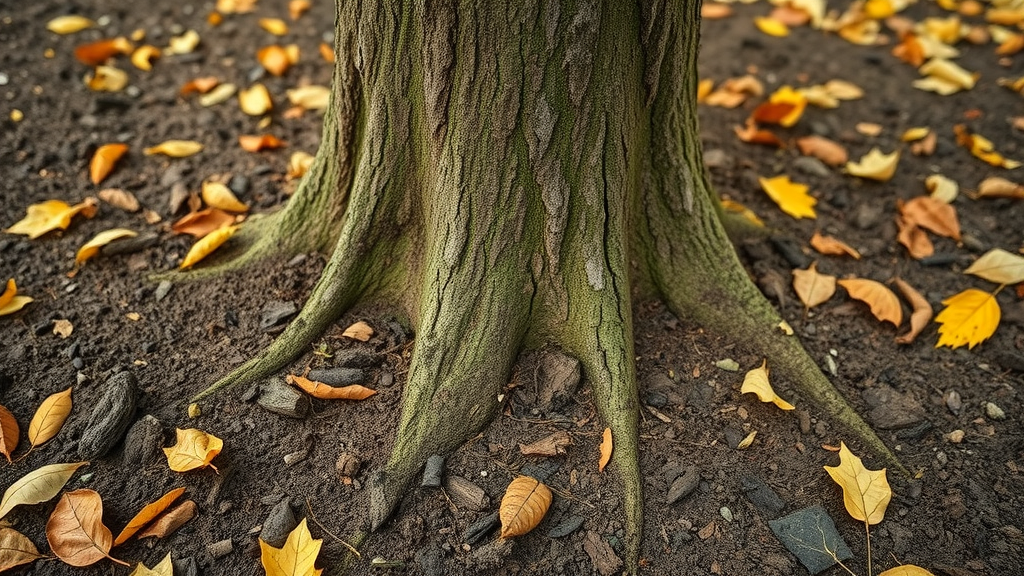
Step-By-Step Guide to Mulching Trees in Autumn
Proper mulching in the fall means following a few essential steps for maximum tree protection and healthy growth. Here’s an expert-approved process, used by top tree care professionals, to get the most out of your fall mulch:
- Clear away old mulch or debris around trees and shrubs. Remove any compacted or decomposed material, which can harbor pests or disease and prevent proper soil aeration.
- Apply 2–4 inches of organic mulch around the base, but avoid piling it up against the tree trunk. Mulch pro tip: Stay within the tree’s dripline without covering exposed roots excessively.
- Keep mulch in a donut shape, creating a gap near the tree bark. This prevents the dangers of volcano mulch, where excessive mulch against the trunk encourages rot and disease.
- Water lightly after applying mulch in the fall. This step encourages the mulch to settle, begins the breaking-down process, and ensures optimal soil moistening before winter sets in.
Choosing the Best Fall Mulch for Trees and Shrubs
Selecting the right mulch is about more than appearance; it’s about giving your trees and shrubs what they need to flourish through winter. The best fall mulch options are made from organic materials that improve soil structure and feed your garden beds as they decompose. Common favorites include shredded bark, wood chips, leaf mulch, compost, pine needles, and even grass clippings when used correctly. These organic mulches create a buffer against fluctuating soil temperatures, boost moisture retention, and provide much-needed nutrients to the soil. For certain landscapes, inorganic mulches (like gravel or rubber chips) may offer weed-blocking benefits, but they lack the organic matter that supports long-term root health.
Organic Mulch vs. Inorganic Mulch: What's Best for Autumn?
When it comes to fall mulching, most professionals and garden enthusiasts favor organic mulch. Organic mulches—such as leaf mulch, wood chips, composted bark, and pine needles—not only provide nutrients to the soil as they decay, but also foster biological diversity within the soil itself. Over time, these materials improve the soil structure, allowing plant roots to better absorb moisture and nutrients. In contrast, inorganic mulches, while effective at suppressing weeds and reducing evaporation, don’t contribute to soil fertility. For autumn applications, organic mulch is almost always the top choice, especially in garden beds and around fruit trees, where soil health is paramount for the next growth cycle.
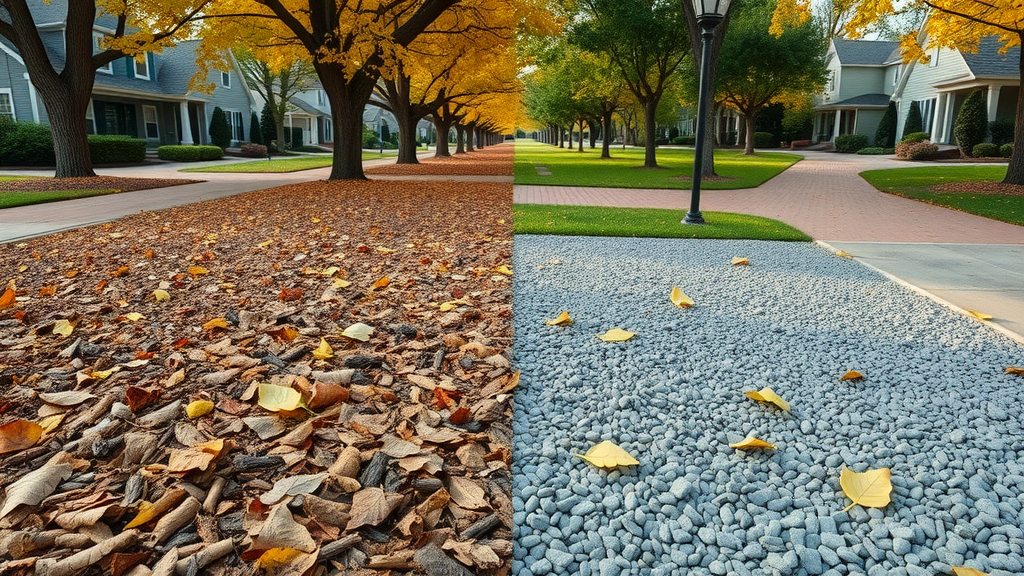
Using Leaf Mulch and Compost for Effective Tree Care
Leaf mulch—nature’s free gift each fall—acts as a nutrient powerhouse for mulching trees in autumn. Shredded leaves break down quickly, providing organic matter that supports beneficial resident earthworms and microbial life. By laying shredded leaf mulch beneath your tree canopy, you mimic the forest floor, creating perfect conditions for slow, steady root growth and optimal moisture retention. Compost, either homemade or professionally sourced, is similarly beneficial, especially when blended with other organic materials. These mulches prevent weed seed germination and reduce the chance of winter root injury, making them ideal for fall mulching of all trees and shrubs.
"Leaf mulch is nature’s way of giving back to your trees—rich in nutrients and cost-effective."
How Mulching Trees in Autumn Impacts Plant Roots and Soil Temperature
Perhaps the biggest advantage to mulching in the fall is its protective effect on plant roots and soil temperature. As autumn’s temperatures swing, a proper mulch layer acts like insulation, dulling the extremes and maintaining a consistent underground habitat. This reduces stress on young roots and helps newly planted trees adjust before winter hits. By keeping the soil moist and cool, mulch also reduces the risk of drought or heat loss, both of which can have lasting consequences for root health and overall tree vitality. Strategic mulch placement—extending from the base outwards but not climbing the tree trunk—ensures roots stay protected from unexpected cold snaps and rapid freezing during fall nights.
Mulching in the Fall: Protecting Roots from Frost
One of the lesser-known threats in the autumn months is the damage caused by unexpected frosts. A well-timed layer of mulch pro may mean the difference between thriving and struggling trees by winter’s end. By acting as a thermal buffer, mulch helps trap soil warmth, allowing plant roots to continue absorbing water and nutrients even as air temperatures fluctuate dramatically. This winter protection is especially crucial for young trees or freshly transplanted shrubs, whose shallow roots are more susceptible to surface freezing. The result is better root growth, improved shoot development in spring, and fewer winter casualties in your landscape.
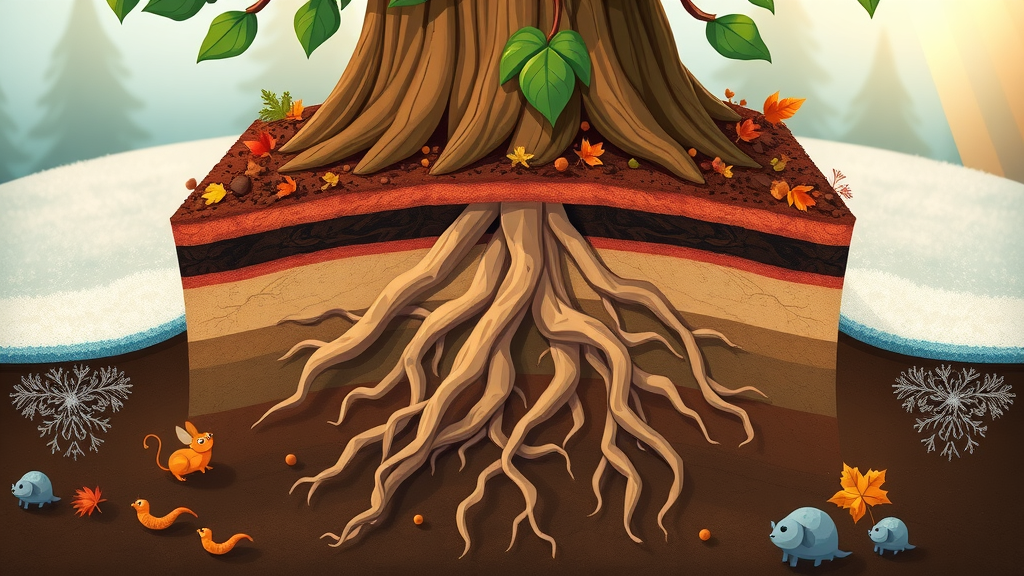
Soil Temperature Control Through Strategic Fall Mulching
Mulch is nature’s own thermostat for your garden beds. By moderating soil temperature, a uniform mulch layer ensures that warmth is retained during sudden autumn cold snaps and slows the soil’s cooling process throughout the fall and early winter. This stable environment reduces stress on all plant roots, encouraging them to grow deeper and stronger just as the weather turns unpredictable. Consistent mulching in the fall also helps preserve soil moisture, reducing the need for supplemental watering and minimizing water runoff. As an added benefit, this climate control prevents the early sprouting of weed seeds that might otherwise outcompete your trees and shrubs for vital nutrients.
Common Mistakes to Avoid When Mulching Trees in Autumn
Even the most well-intentioned gardeners can make mulching missteps in autumn, risking tree health instead of supporting it. One of the most frequent errors is volcano mulching—piling mulch high against the trunk, which can suffocate bark and invite fungal diseases or pests. Similarly, applying a thick layer of mulch far beyond recommended depth leads to excessive moisture, root rot, and even stress for your trees. Choosing low-quality or improperly composted mulch may introduce weed seeds, pests, or pathogens to your beloved garden beds. Finally, skipping the autumn mulch refresh means exposing roots to harsh temperatures and moisture swings as winter arrives.
- Piling mulch against the trunk (volcano mulching)
- Over-mulching, creating excess moisture and root rot
- Using poor quality mulch that introduces pests
- Neglecting to replenish mulch before winter
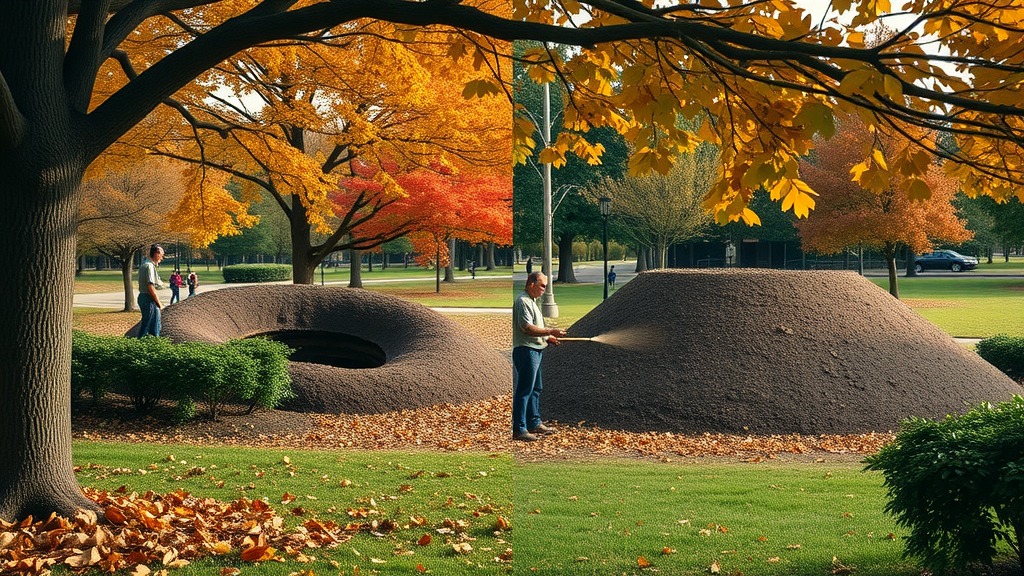
People Also Ask About Mulching Trees in Autumn
Should you mulch trees in the fall?
Answer: Yes, mulching trees in autumn prepares them for winter stress by protecting plant roots, moderating soil temperature, and improving nutrient retention.
Is it worth mulching in the fall?
Answer: Absolutely. Fall mulching boosts tree care by extending moisture retention and serving as an insulation layer throughout cold months.
What is the 3-3-3 rule for mulch?
Answer: The 3-3-3 rule recommends using a 3-foot diameter of mulch, keeping it 3 inches away from the trunk, and applying a 3-inch depth for best results in autumn.
Is it too late to mulch in October?
Answer: October is not too late. Fall mulching up through late autumn ensures continued protection for your trees and shrubs before the first ground freeze.
Key Takeaways for Successful Mulching of Trees in Autumn
- Mulching in the fall supports root health and prepares trees for winter.
- Organic mulch options like leaf mulch are most beneficial.
- Avoid over-mulching and improper application techniques.
- Regular tree care extends the life and vitality of your landscape.
FAQs About Fall Mulching and Tree Care in Autumn
How deep should fall mulch be applied?
For most trees and shrubs, a 2–4 inch layer of organic mulch is ideal in fall. This depth insulates plant roots, keeps the soil moist, and breaks down gradually to feed the soil, without suffocating plant stems or roots. Avoid a thick layer greater than 4 inches to promote healthy air and water movement within the soil.
What type of mulch should I use for fruit trees in autumn?
Fruit trees thrive when mulched with well-aged compost, leaf mulch, wood chips, or pine needles. These organic mulches provide important nutrients and improve soil structure while keeping soil temperature consistent. Avoid using fresh grass clippings or excessive amounts of bark that might draw nitrogen from the soil.
Does fall mulching help newly planted trees and shrubs?
Yes, fall mulching is vital for protecting young trees and shrubs from freeze-thaw cycles and moisture loss. A properly applied mulch ring helps maintain a consistent microclimate for early root development and guards against harsh winter weather. Ensure mulch is kept clear of the trunk and not too thick for optimal results.
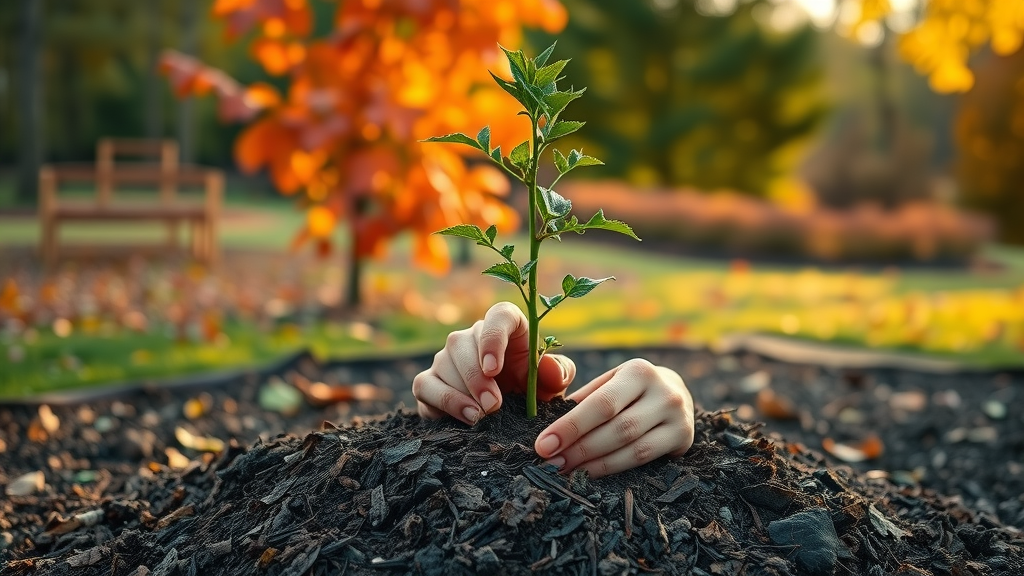
Conclusion: Embrace Mulching Trees in Autumn for Lasting Tree Health
When you mulch trees in autumn, you’re giving your landscape the single best investment for future health and beauty.
"Proper mulching is the single best investment you can make for your trees each fall."
Ready to Improve Your Tree Care? Contact Tree Guardian News for Expert Guidance
Share your insights on Tree Care -- call 203-271-7991 to discuss!
Watch: Video Guide to Mulching Trees in Autumn
Watch: Expert Tree Care and the Science of Fall Mulching
Applying mulch in autumn is a strategic practice that offers numerous benefits for tree health and garden vitality. According to the Arbor Day Foundation’s article, “Arborist Advice: Mulching 101,” proper mulching helps retain soil moisture, suppress weeds, and protect tree roots from temperature extremes. (arborday.org) Similarly, the Rhode Island Tree Council’s guide, “Winter Time Mulching; How to Mulch Your Trees and Shrubs to Boost Plant Health & Hardiness,” emphasizes that mulching reduces water evaporation by 30-70% and increases water filtration, thereby enhancing plant resilience during colder months. (ritree.org) If you’re committed to fostering a thriving landscape, these resources provide essential insights into effective autumn mulching techniques.
 Add Row
Add Row  Add
Add 




Write A Comment